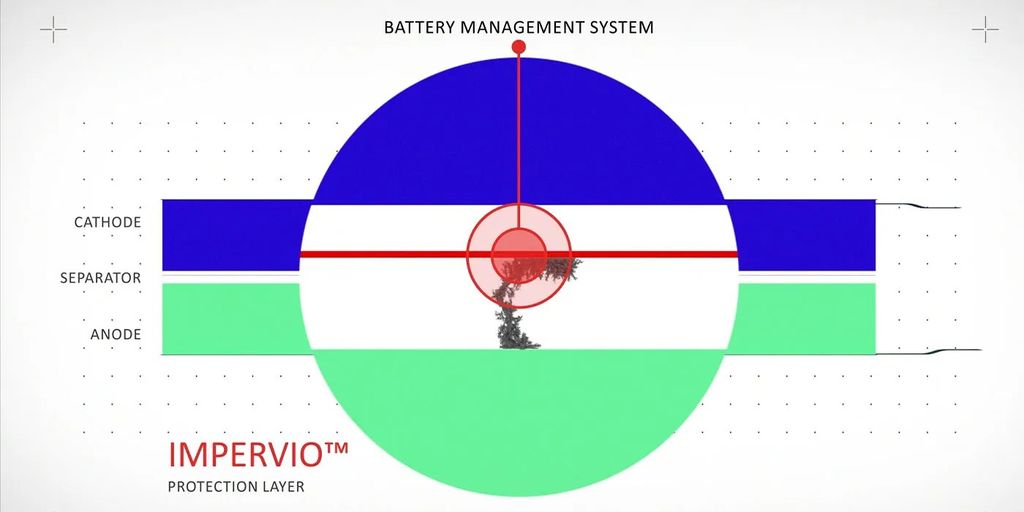- 24M, a U.S.-based startup, developed a way to prevent battery fires.
- Its Impervio separator prevents dendrite formation when a cell is overcharged.
Electric vehicle battery fires are nothing to mess with. Even though they’re statistically less likely to happen compared to combustion-powered vehicles, when a battery ignites, it can stay on fire for hours or even days, sometimes without showing obvious signs, which can lead to some dangerous situations.
But people in the battery industry are not just sitting around doing nothing–innovation is always happening, and the latest discovery from U.S.-based startup 24M might just be one of those breakthroughs that change the industry.
It’s called the Impervio battery separator and, in short, it can significantly improve safety by preventing overcharged battery cells from catching fire. The Volkswagen-backed startup released a video showing two 10-amp-hour lithium nickel manganese cobalt graphite cells, both fully charged and then brought to 100% overcapacity. Overcharging a battery can lead to dendrite formation and an internal short circuit, which can lead to a fire or explosion.
The cell on the bottom was an off-the-shelf unit, while the one on the top had 24M’s Impervio separator, and the results speak for themselves. The bog-standard cell burst into flames after about 38 minutes into the testing procedure and exhibited a temperature of 293 degrees Fahrenheit, while the 24M-made cell with the Impervio separator remained stable during the one-hour testing and never went above 86 degrees.
“Battery safety is a major roadblock to the widespread adoption of EVs,” said Naoki Ota, 24M President and CEO. “Recent EV fires around the globe have highlighted why new battery safety innovations are required. A sustainable energy future is only possible with innovations like Impervio, which can help prevent battery fires and create new opportunities for battery innovation.”
24M’s separator obstructs dendrite propagation by controlling the cell at the individual electrode level, the company said. The added layer of security can prevent thermal runaway by monitoring the cell’s electrochemistry and enabling the implementation of a failsafe in the event of a potential short, 24M added.

24M’s Impervio battery separator
The Cambridge-based startup isn’t the only one out there searching for ways to minimize the risk of battery fires. A couple of days ago we reported on LG Chem’s temperature-responsive “safety reinforced layer” that can change its electrical resistance based on temperature, effectively acting as a “fuse” that blocks the flow of electricity in the early stages of overheating.
If we could magically put these innovations into practice as soon as possible, it would be great. But, the fact of the matter is that both 24M’s and LG Chem’s solutions to preventing battery fires are still at least a few years away from becoming standard features in EVs.
Read the full article here



